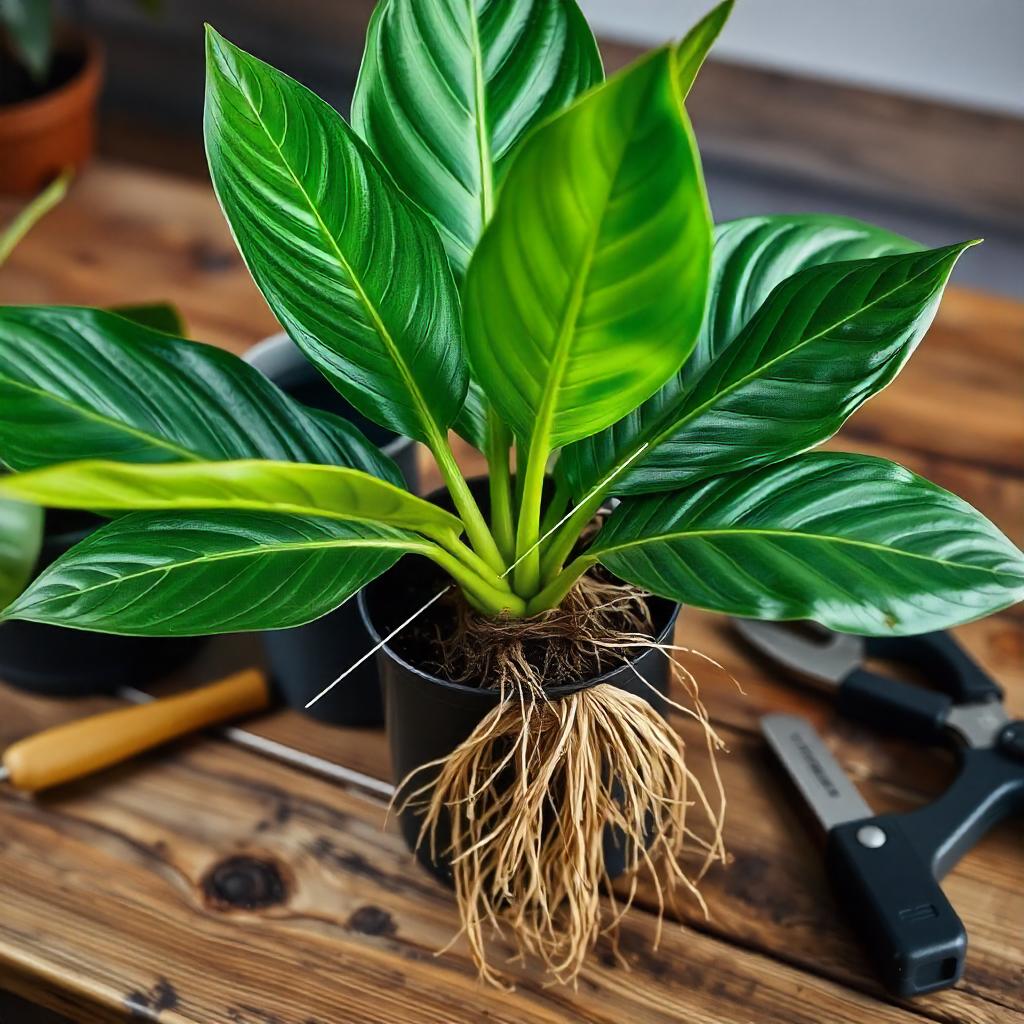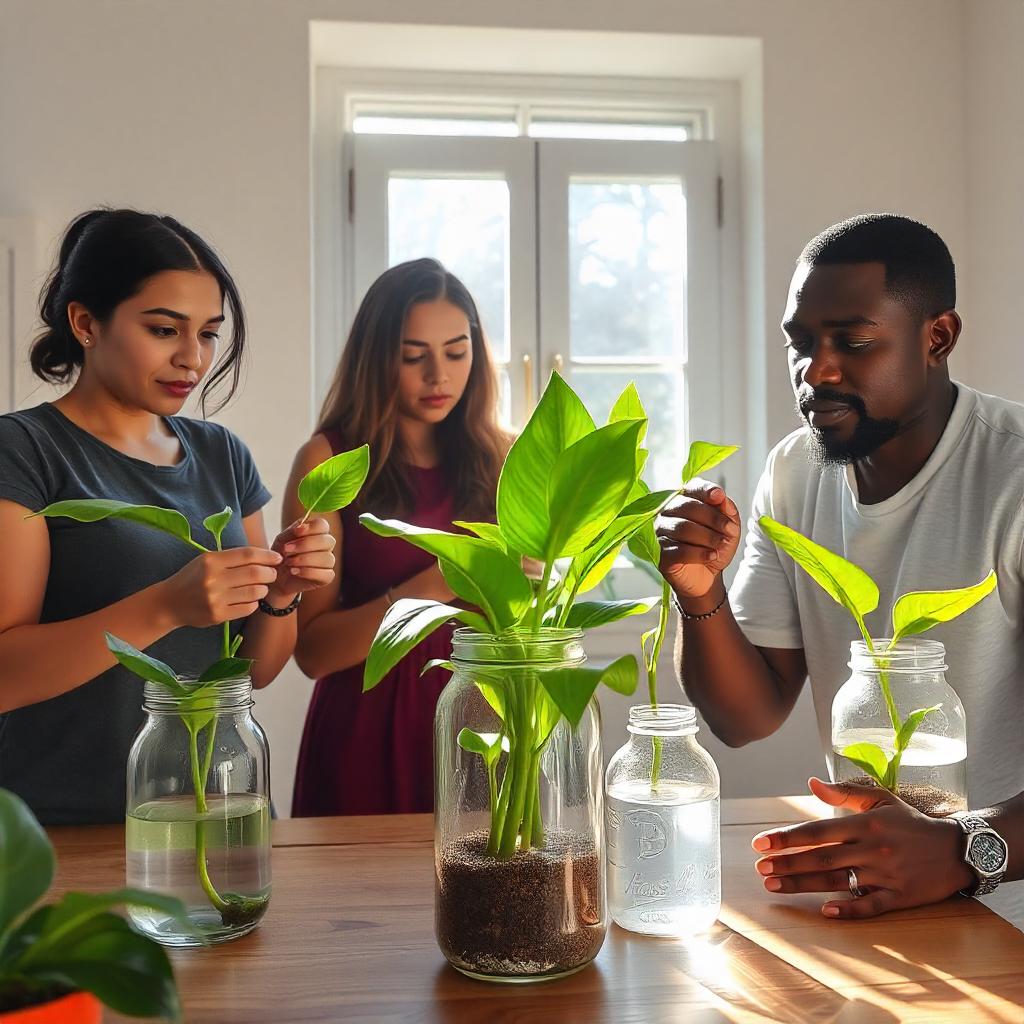Welcome to the ultimate guide on how to propagate Monstera, be you a seasoned indoor plant enthusiast or a new entrant who intends to expand the indoor jungle. Learning how to propagate a Monstera will be an exciting adventure. Thus, this article looks deeply into the propagation of the most loved plant through various methods such as stem cuttings, water propagation, and soil techniques. Be prepared to unlock the secrets of propagating Monstera with complete confidence and assured success.
Monstera Propagation: Know It.
Monstera propagation is a process of making new plants from a pre-existing one by a variety of methods, including stem cuttings, water, or soil. This allows enthusiasts to increase their stock of the Monstera species and share them with other people if they want to. Knowing the propagation of Monstera can empower you to create and grow healthy, thriving plants while growing in appreciation of them as your green companions.
A deeper understanding of Monstera propagation helps explain growth patterns, rooting mechanisms, and plant development. It therefore puts garden enthusiasts in a good position to make informed decisions when it comes to choosing the right propagation method and, afterward, taking good care of the propagated plants. Knowledge about Monstera propagation does not enrich one’s experience in gardening but also allows the person to feel satisfied and fulfilled when new plants grow and flourish under their touch.
Whether it is the first time trying your hand at propagation or perfecting the skill, the process of propagating Monstera varieties becomes very rewarding and informative in detail. In this process, a plant enthusiast learns to appreciate how growth can be magic, nature can be resilient, and the wonder of a plant’s botanical life. Embracing the art of Monstera propagation opens a door to creativity, patience, and deep connection with the botanical world.

Propagation Methods
There are three effective methods for the propagation of Monstera, including using stem cuttings, water, and soil. Each of these methods adds a different dimension to creating Monstera plants from already existing ones.
Stem Cuttings: This propagation method initiates with the discrimination of a healthy stem from the mother plant, which is then cut just below a node. It is from this that the cutting will develop roots to grow into a new Monstera plant.
Water Propagation: This propagation is done by placing the cut part of the Monstera in water to develop the roots before planting it in the soil. This is very visual, since one can see through water, and that’s why this method is pretty liked among plant lovers.
Soil propagation would be sticking the cuttings of Monstera directly into a suitable potting mix. This provides support to the clod as it grows the roots and establishes itself within the soil environment.
Each of these different propagation methods has its advantages and considerations; thus, flexibility for the plant enthusiast in choosing a technique that may work best in given situations is allowed. The essence is proper care and attention during propagation to ensure healthy growth and successful establishment of new Monstera plants.
Stem Cuttings Propagation
For the propagation of Monstera using stem cuttings, select a healthy stem with a few leaves on it. Take a sharp, sterile knife and cut a section of stem below a leaf node to about 6 to 12 inches long. Remove the lower leaves, leaving the nodes, which will be used for the formation of roots.
Once you have your cut prepared, you allow it to dry and callus for a couple of days to prevent its rotting. Plant in a few days, in a very draining soil mix, making sure the node where the leaf was attached is buried in the soil. Keep the soils always moist but not waterlogged, stimulating the development of roots.
Place the potted cutting in a warm, bright location but not in direct sunlight. Keep the leaves misted regularly to keep the humidity level around the cutting. Eventually, new roots will form from the node that was buried, which is a good indicator that propagation has occurred. Keep checking on the growth, moving it to regular Monstera care when the roots are established.
Water Propagation Process
One of the favorite ways to multiply your Monstera plant is through water propagation. Take a healthy leaf cutting below the node, placing it in a container full of water, where the node will be submerged. Change the water regularly to avoid stagnation.
Roots take a few weeks to develop, indicated by white roots forming from the node. When the roots have established sufficiently, transfer the now-rooted cutting into a well-draining soil mix. Water and give the propagated Monstera enough light to maintain its growth and development after transplanting.
One great thing about this propagation method is the fact that you get to see the roots grow visually, which, if you are an enthusiast, might be quite interesting. Keep the water level normal and as clean as possible for the best development of the roots. The growing of your plant in water might be quite rewarding and a good way of viewing visible growth for your new Monstera.
Soil Propagation Technique
Begin the process of propagating Monstera in soil by preparing a pot that is well-draining, with a wet and aerated mixture consisting of equal parts potting soil, perlite, and orchid bark. It will provide a proper balance between moisture retention and aeration during root development.
Take a healthy cut of a Monstera plant, having at least one node with an aerial root. Dip the cut end into rooting hormone in order to enhance root development, then plant it into the prepared mix of soil. Let the node be buried in the soil as the aerial root stays out.
Place the potted cutting in a warm, humid environment with indirect sunlight. Keep the soil moist, but not too wet, to encourage the growth of the roots. Verify the presence of new growth on the cutting; that is the only surefire way to tell if it has been propagated successfully.
Within weeks, you should have the development of roots; this is a sign of successful propagation. Once roots develop in the cuttings, and after the cutting has developed a healthy root system, care for it as you would an older Monstera by providing the right light, water, and humidity levels for it to grow to perfection.
Choosing the Right Cutting
When choosing the correct cutting to propagate your Monstera plant, you have to be very keen on the growth points that seem healthy. Find a well-growing stem with bright green leaves, as this depicts the proper health of the plant. Observe that the chosen node is fresh without any signs of disease or damage by some pest for good and effective plant propagation.
Then, select a node to cut, and this node will serve as the starting point for new roots. In simple words, nodes are points in the stem where leaves and roots come out. Each cutting you choose should have at least one node, and it is desirable to have a few aerial roots if possible for quick rooting. Let the node be at the very bottom of the cutting so roots come out of it.
Paying close attention to a healthy cutting with an ideal node placement, you will only set in motion what would otherwise have been a very successful propagation of Monstera. Remember that the general quality of the cutting will play a huge role in the success of the propagation process. Take your time to choose correctly; ultimately, you are contributing to the growing and developing of a Monstera plant long-term.

Identifying Healthy Growth Points
Successful propagation requires the determination of where, exactly, your plant’s nodes of growth are active. Here’s how to find nodes for the best areas of cutting:
Look for nodes: These are points on the stem from which leaves or roots emerge, be they aerial roots or not. This area is important in propagation since this is where it contains the genetic material needed to make a new plant grow.
Check for aerial roots: The aerial root is the root that grows above land and mainly helps in absorbing water and other vital nutrients. Choosing a cutting with obvious aerial roots will give more chances for the successful propagation of a plant.
Look for nodes into the leaves: There are sections where the leaves merge from the node of the plant. The nodes of the leaves often show active growing points and it is highly recommended to plant them to develop new roots and growth of plants.
Paying attention to these variegated growth points will increase the possibility of successful Monstera propagation, as these nodes carry all the elements that form a new plant in them.
Choosing a Node to Make the Cut
Any time you propagate your Monstera, the node from which you take the cut must be healthy and vigorous. Plants have nodes-meristematic regions of the plant where leaves are produced on the stem, and roots can form, and this is why plants can be so easily propagated at the nodes of the plant. Critical steps to follow in propagation include:
Look for active nodes showing new leaf growth or perhaps some type of aerial root formation. These are indications that a node is active and will provide higher rooting success.
When possible, select a node with at least one leaf and some aerial roots. A node with these features is most likely to establish roots quickly and support the growth of a new Monstera plant effectively.
Choose a node that is on a healthy, mature stem for the best chance of propagation. Nodes taken from a section of a plant that is in a weak or diseased state will only work to hinder the propagation of your plants and the overall health of the new plant, too.
Preparing for Propagation
First, prepare for the propagation by gathering the necessary materials: a sharp, sterile cutting tool, potting mix with very good draining ability, a clean container with drainage holes, and water for water propagation. Sharp cutting tools are necessary to provide clean cuts for the success of the propagation. Line up everything beforehand to further streamline the process. Remember that propagation would be successful depending on a healthy cutting with ideal planting conditions.
Planting the Cutting
Plant the cuttings in a soilless potting mix for good drainage and prevention of waterlogged soil. Dig a small hole in the soil and set the cut end of the stem in it carefully. Firm the soil around the cutting gently; this will help hold it in place.
Put the cuttings in indirect sunlight and keep the soil moist. Direct sunlight may burn the young plant. Mist the cuttings to maintain humidity levels around the environment that are favorable for root growth.
You can even make use of a transparent cover or a plastic bag on top of it to create a mini-greenhouse effect for keeping the surroundings of the plant humid, which is very much favorable for the development of the root. Keep checking the moisture from time to time to avoid the drying of the soil.
Check regularly for any signs of root growth that would indicate successful propagation. Patience is often required at this stage because it may take a few weeks for roots to set. Be cautious with the amount of water, as too much may create root decay, and that would impede propagation.
Caring for Propagated Monstera
Care for your propagated Monstera by giving it a fair deal of sun, but preferably indirect to help with healthy growth. Let the soil dry slightly between waterings; consistently water the plant, but adjust to specifications as overwatering will cause root rot.
Keep an eye on the humidity around your Monstera, which prefers a more tropical atmosphere. You will, of course, be able to provide it with a similar environment through periodic misting of the leaves or by placing it on a humidity tray. Provide support for the plant as it grows, keeping it upright and preventing any damage to the stems or leaves. Prune your Monstera as needed to encourage a fuller plant and to maintain health and appearance.
Regularly check on your propagated Monstera for the growth of pests or diseases that might have affected it, and take instant remedial measures to avoid a mass infestation. Treating it once in a while with a balanced fertilizer will also be good, especially in the growing period, because that way, it will provide the plant with the necessary nutrients to grow well. With the above tips for care, your propagated Monstera will do extremely well and add beauty to your indoor garden.

Common Problems and How to Fix Them
Common issues with the propagation of Monstera include the yellowing of leaves, which happens quite often when you are overwatering your plant. You simply need to adjust the rate at which you water to avoid root decay. It may require more light if it is growing very slowly or wilting, but be sure to place the plant in a position where it won’t receive direct sunlight as this would burn the leaves.
Other things that one should worry about are pests: spider mites, or mealybugs. It is necessary to check your propagated Monstera from time to time for pests and to take quick measures with neem oil or insecticidal soap when found. Moreover, if there is browning of leaf tips, this might mean the air is too dry. You can increase the humidity levels by misting the plant or placing a humidifier near the plant. Proper humidity favors healthy growth.
If your propagated Monstera is losing its leaves or getting brown spots on its leaves, it may be experiencing a lack of nutrients. Provide him with a balanced fertilizer to provide him with all the missing ones and keep him healthy. Keep him regularly checked and any defect should immediately be curtailed to prevent any loss in propagation and give healthy growth. You will get a very healthy Monstera plant by finding solutions to these very common problems.
The mastery of growing the Monstera requires combining sensitive touch between horticultural skill and creative nurturing. The details in this publication will guide you step by step through the steps to unlock your secrets of multiplying your Monstera with the greatest care for accuracy for enriching any indoor space with a thriving collection.
Keep in mind that the process of propagating a Monstera is very patience-rewarding. From selecting just the perfect cut to excellent aftercare for your newly propagated plant, each of these processes is essential in growth and health for your Montsera family. With effort and time, you’ll enjoy the circle of propagation and get to witness how your Monstera will thrive and grow under the touch of your loving hands.
